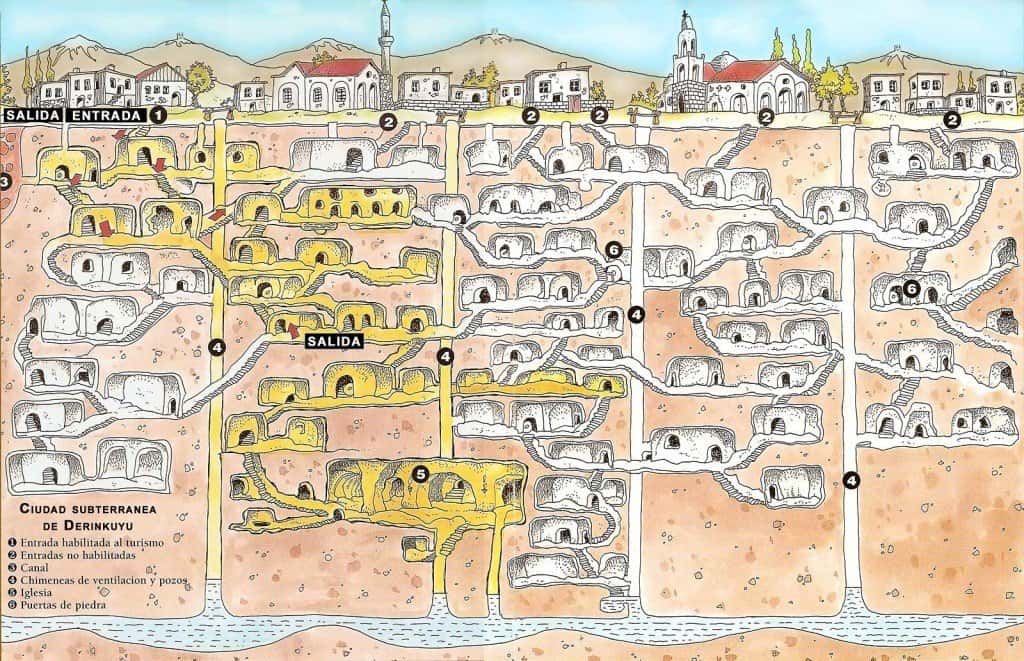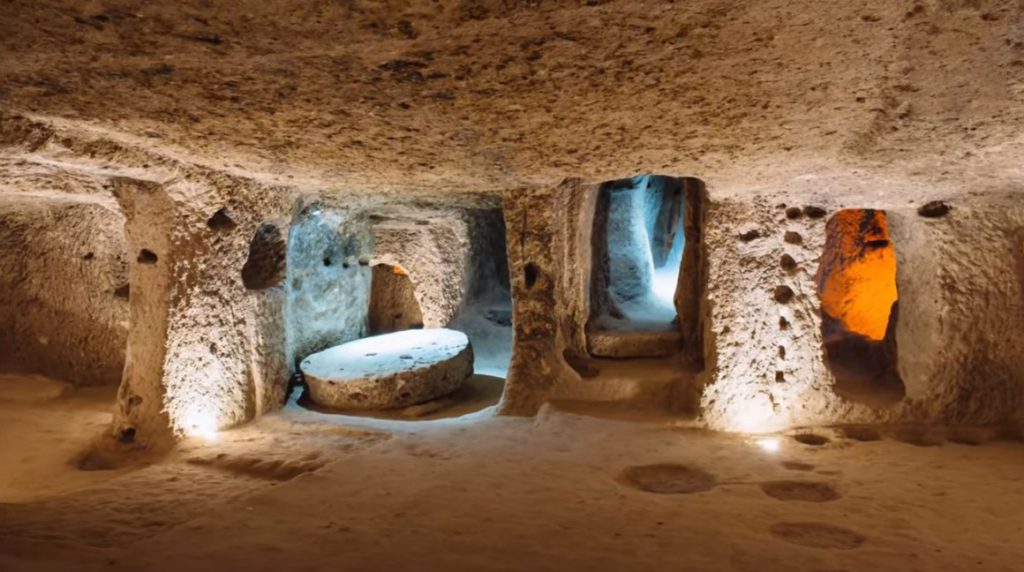During renovations, a Turkish homeowner stumbled upon a hidden underground city while chasing his runaway chickens through a hole in his basement wall. This accidental discovery led to the revelation of Derinkuyu, an ancient Turkish city that once housed a population of 20,000.
The unidentified homeowner knocked down a wall in the 1960s in an attempt to capture his fleeing poultry, unveiling a dark tunnel that led to the underground city. Known as Derinkuyu today, this subterranean marvel is located more than 280 feet beneath the surface in the Central Anatolian region of Cappadocia. It holds the distinction of being the largest excavated underground city worldwide, with connections to over 200 smaller underground cities that have been discovered in recent decades, as Turkish guides informed the BBC.

Exploring the depths of this underground city, researchers discovered 18 levels of tunnels that contained various dwellings, storage areas for dry food, cattle stables, schools, wineries, and even a chapel. The city was ingeniously equipped with a ventilation system that supplied fresh air and water to its inhabitants.
According to the guide named Suleman, life in Derinkuyu was undoubtedly challenging. Residents used sealed clay jars for sanitation purposes, relied on torchlight for illumination, and designated specific areas for disposing of deceased individuals.

While the exact construction date of this impressive city remains uncertain, ancient writings dating back to 370 BC indicate its existence. Initially used for storage purposes, Derinkuyu later served as a refuge from foreign invaders. Its narrow and low passageways were deliberately designed to force intruders to stoop and enter in single file. The doors connecting each level were blocked by half-ton boulders that could only be moved from the inside. Additionally, small holes in the boulders allowed residents to defend against potential trespassers.
Although the architects behind Derinkuyu remain a mystery, researchers speculate that the Hittites, a Bronze Age Anatolian civilization, may have initiated the excavation, with subsequent construction carried out by the Phrygians, an Indo-European empire. Over time, Derinkuyu changed hands multiple times, including transitions between the Persians, Christians, and Cappadocian Greeks.

During the Islamic raids on the Christian Byzantine Empire in the 7th century, Derinkuyu likely reached its peak population of 20,000. However, in 1923, following their defeat in the Greco-Turkish war, the Cappadocian Greeks abandoned the city and sought refuge in Greece.
Today, Derinkuyu stands as a testament to ancient engineering and human ingenuity. After being rediscovered a century ago, it welcomes visitors who are eager to experience life in an underground city. In recognition of its historical significance, Derinkuyu was added to the UNESCO World Heritage list in 1985.

